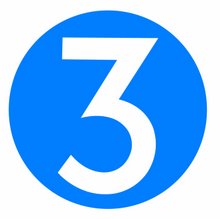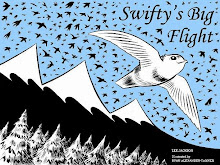Nathaniel “Than” Clevenger, Principal/CEO
503.449.1029 (USA), email:
than@why3.com, Skype:
nathaniel.clevenger
Than Clevenger is a twenty-year veteran marketing and communications strategist with significant experience in developing communications and marketing programs in the construction, commercial finance and real estate development industries. Than has held senior positions for two of the largest marketing and communications agencies in the world, Hill and Knowlton Public Affairs Worldwide Company and Fleishman Hillard. He has created, developed and launched award-winning consumer and B2B brands in global markets and has expertise in promoting construction technologies, residential and commercial development projects, and consumer goods and services.
He has served as an outsource Chief Marketing Officer (CMO)and/or strategic marketing advisor to commercial and residential real estate projects throughout the U.S. and Canada One of his projects, a $250 million commercial development, was named as one of the top ten projects in the nation in 2005. The project was constructed by one of the oldest design/build contractors in North America. He is currently serving as CMO for what will be one of the first LEED-ND communities in the world. He is also serving as the consulting CMO to the fastest concrete batch plant productions system company in the world based in Nova Scotia, Canada. During the mid-90's Than co-founded what became one of the largest real estate finance companies in the Mid-Atlantic U.S.
Relevant recent clients include Opus Development (Minneapolis), Swinteron Builders (San Francisco), Vidabode Group (Amherst, Nova Scotia), Thimble Creek Development Corporation (Oregon City, Oregon) and Housing Northwest, an affordable housing non-profit with $200 million under management.
Than formed 3 after leaving Fleishman Hillard—currently the largest public relations firm in the world—as a vice president and co-chair of one of Fleishman’s global vertical marketing teams. Prior to joining Fleishman Hillard, A seasoned manager and leader, Than served in senior staff positions with The Democratic National Committee (52nd Presidential Inaugural Committee), The Canzeri Company (the Rockefeller Family's public relations and public affairs firm) and Hill and Knowlton Public Affairs Worldwide Company (currently the second largest public relations and public affairs firm in the world) in both the D.C. and New York offices. In his early 20’s, he worked for the legendary public relations strategist, Frank Mankiewicz; former Nancy Reagan press secretary, Elaine Crispin; and Reagan advance man, Joe Canzeri. He also worked with and for Marilyn Funderburk, a former White House deputy social secretary.
Current and former clients include CEO's and senior executives in large, privately-held corporations, Fortune 500 and multinational corporations, foreign heads of state, trade association directors and senior executives at large non-profit foundations. Organizations, companies and leaders with whom Than has worked include: Sir Robert Maxwell, The Honorable Clark Clifford, Jerry Tarkanian, The White House Chief of Protocol, the last Miss U.S.S.R., the Emir and Royal Family of Kuwait, the former heads of state of Morocco, Finland, Brazil, The Republic of Turkey, North Yemen and the current head of state of Angola; as well as the CEO's of Gulfstream Aerospace, NBC, Lockheed Martin, The American Red Cross, The American Task Force for Bosnia, UNICEF, The United States Olympic Committee, Reading is Fundamental, the Recording Industry Association of America, Deloitte and Touche, Enterprise Ireland (the seed capital investment agency of the Republic of Ireland), Preston Gates and Ellis, Swinerton Builders and responDesign (an interactive video game publisher) to name a few.
He has written speeches and or correspondence for a variety of leaders including former President Bill Clinton; former President George H.W. Bush; IMF Chairman, Michel Camdessus; comedian, Bill Cosby; former District of Columbia Mayor's, Sharon Pratt Kelley and Marion Barry Jr.; various U.S. Olympians and U.S. Olympic officials, including gold medal skater, Bonnie Blair and gold medal boxer, Riddick Bowe as well as sports commentators Bob Costas and Greg Gumbel. He also served as protocol and event manager for the opening ceremonies of the Korean War Veteran's Memorial in Washington, D.C., and as a spokesperson for one of Washington, D.C.'s mayoral inauguration events.
Than is an advisor to several Northwest-based non-profits and was recently listed in Strathmore's Who's Who in American Business, 2004 Edition, He is a member of the Multnomah Athletic Club in Portland, Oregon, and is a native of the Hampton Roads area of southeastern Virginia (formerly and historically known as Tidewater) Given the time, Than enjoys competitive sailing, painting, and military history. He is a graduate of George Mason University in Fairfax, Virginia, and currently resides in Portland, Oregon with his wife, Sydney, a Portland native and writer, and their three children, Jack, Steele Elizabeth and Gus Henry.
For more information on Than, please visit his personal website at www.why3.com.













